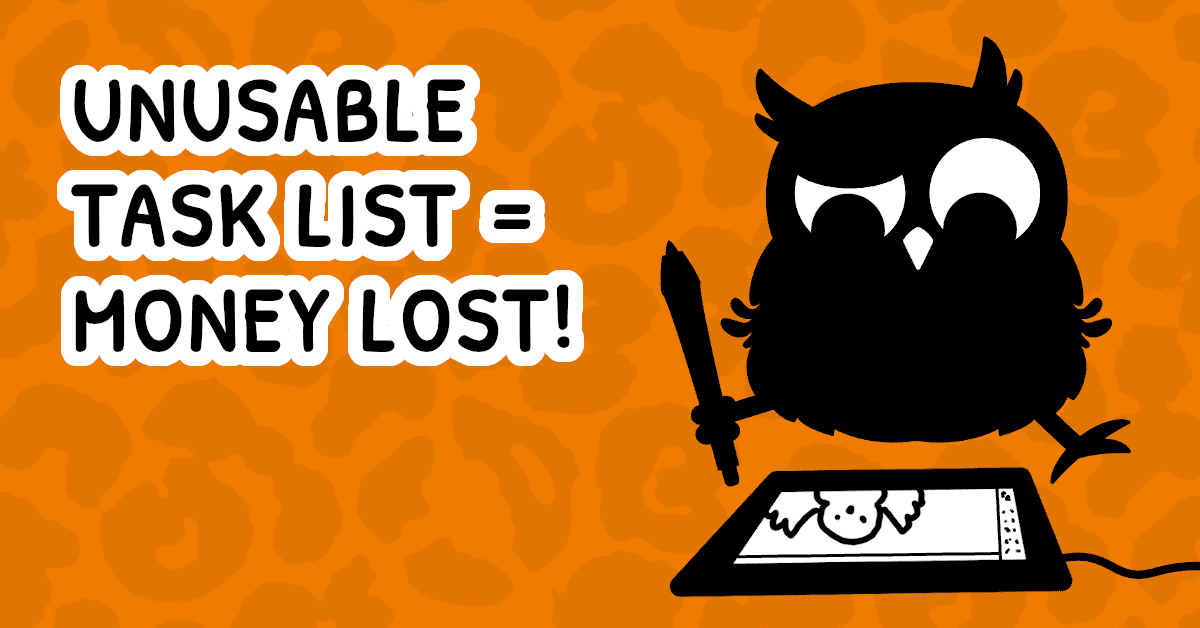Word mark doesn’t just spell out your brand name – it also gives it an identity. Think about the fluid, flowing letters of Coca-Cola. Or the unique, imaginative autograph of Disney. Their word marks may be just words, but everyone, everywhere recognises them!
In this article, Vayandil will show you how the Owl Basket word mark was created!
About this series
Having a brand is not just about getting yourself a logo. It’s about your image, the reputation that your audience forms of you. It’s what they think about you, not what you think about yourself.
However, you can affect what you want other people to think about you. You can choose the way you represent yourself. Through visual language, through your “voice”, through your interactions with people.
With branding, you can build yourself an image, or reputation that reflects your values and attracts your desired kind of company. And the fun thing is that anyone can do it!
This series is meant to be a simple, one-step-at-a-time approach to the many aspects of the branding process. I’m going to use our very own team brand, “Owl Basket” as an example in every step of the way.
Defining word mark, typeface and font
I’m going to use word mark as the term for the “word” part of the Owl Basket logo. The “image” part of the logo, meaning the owls and the basket, aren’t part of this discussion. You can read about its creation in my previous article, Brand mark in a logo – Brand creation step by step.
Typeface is what people usually call a “font” or “font family”. It’s the whole lettering style including all the variations of that style. For example: “Arial” is a typeface. “Regular”, “bold”, “italic” and “bold italic” are different fonts of the Arial typeface.

Use a typeface for a quick start, but remember to check the license
I could’ve started sketching our word mark by hand, to feel out for the lettering that would fit our brand. But it was much quicker to just type out “Owl Basket” and start testing existing typefaces on it.
So I went on to browse online font libraries. I specifically wanted to find typefaces that were completely free so that we could save on costs.
Using free typefaces meant that I also had to be mindful about their license. A typeface’s license is what determines where and how you’re allowed to use it. Does it permit digital use only? Or maybe print use only? You should always make sure that the license of the font you choose covers all your use cases.
That’s why I favour the Google Fonts library. All their typefaces are completely free to use, were it for your personal hobby project or for commercial merchandise business.
Sometimes I browse other online font libraries, but I always look for the full commercial use license before I download anything. That way I won’t ever have to worry about getting into legal trouble. Now or in the future.
Set some boundaries to narrow down your font candidates
Even if you decide to use completely free fonts, there’s still hundreds, if not thousands of possibilities to choose from. That’s why it’s good to come up with some descriptors about what you want your word mark to feel like.
In our case, we wanted the Owl Basket word mark to feel fun and laid back. It needed to look casual and approachable, but also professional and reliable.
Such descriptors laid out pretty good boundaries for my typeface hunt. I looked for:
- Sans-serif typefaces. They look modern and reliable, but also have a more casual feel than serif typefaces.
- Handwritten styles. Those definitely feel casual.
- Bold and/or distinct lettering. The word mark had to be easily readable even in a tiny size.
I tested out lots and lots of fonts that fit the criteria. In the end, I found a decent amount of options that I could review with Gheralf. Four of them proceeded to the next step.

Trace a font by hand to make it more casual
Four fonts stood out from the crowd: Caveat Brush, Jua, Permanent Marker and Mali. Caveat Brush and Permanent Marker had a handwritten, dynamic feel, while Jua and Mali felt more calm and professional.
We felt the answer lay somewhere in the middle. That’s why I took my drawing tablet and traced one of the “more professional-looking” fonts, Mali, into a vector graphic.
The handwritten tracing worked really well. It definitely looked casual and friendly. Even more so when I experimented with strokes that mimicked permanent markers.

Refine the letters to make it more professional
While the letters now looked casual and friendly, they needed to be toned down a bit. After all, we wanted the word mark to look professional too.
So I placed my hand-written letters on top of the original Mali letters and started tweaking them according to the original font style. That way I could very easily make the letters more uniform, bringing back some of the “professional and reliable” feel.
After that, there wasn’t much more work left for me to do. I moved the letters closer together, eyed the whole, then moved them a bit further from each other and eyed again. Tiny tweaks here and there, to make the final form pleasing to the eye and easily readable.

Add the owl
That was the story of the Owl Basket word mark! But, when I looked at the mark, something was undoubtedly missing.
I actually had some plans already when I designed the word mark. One reason why I connected the K, E and T letters was that I wanted to create a platfrom.
For an owl to run on it, naturally!
So our official word mark isn’t only letters. It also has the fun, cute little owl to punctuate our approachable brand. And the final addition, the underline, is there to give the mark a more grounded feel.




